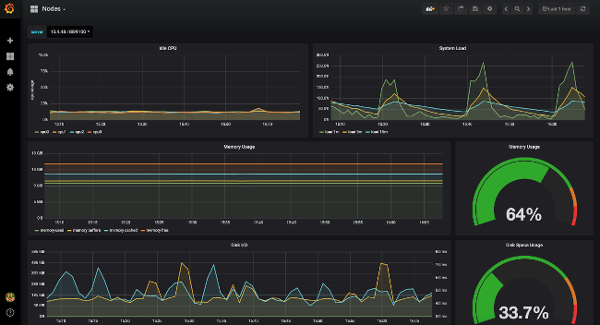

Plus, with HPE InfoSight automatically 86% of issues are automatically resolved. This results in 99.9999% guaranteed data availability. It’s also worth noting that Nimble Storage solutions easily integrate with HPE InfoSight, an artificial intelligence-based system that can monitor the arrays, collect and analyze data from HPE Nimble devices, and use predictive analytics to identify problems before they occur. Plus, with all-inclusive licensing, fast implementation, and the ability to easily combine arrays or add shelves and drives, Nimble storage solutions are flexible and scalable, allowing your enterprise to remain agile no matter its size. Since these storage solutions support HPE Cloud Volumes, enterprises can also easily move data between on-premises and cloud storage resources or among various cloud providers. The NimbleOS operating system also provides data deduplication and compression, saving storage space, improving performance, and reducing unnecessary writes, power consumption, and cooling charges. You can learn more about dHCI in the next section.Įach Nimble Storage solution works slightly differently, but all three run on the HPE NimbleOS operating system, support triple parity, provide high-speed storage, and offer efficient data reduction and unprecedented reliability. It’s ideal for mission-critical databases, business-critical apps, data warehouses, and mixed workloads. dHCI is an intelligent yet simple VM-centric storage solution that allows enterprises to scale storage and compute independently, unlocking the cloud experience across the hybrid cloud for increased flexibility.Enterprises can run QA, development/test, analytics workloads, and even production workloads on a flash-optimized platform that can access backup data. These secondary arrays enable enterprises to quickly back up and recover data from primary storage arrays. Nimble Adaptive Flash Arrays include Secondary Flash Arrays, which compris HDDs and solid-state flash drives. By using HDDs for infrequently accessed data and solid-state flash drives for regularly accessed data, enterprises can cut costs while getting the high-performance levels they need.

Adaptive Flash Arrays have a hybrid configuration that involves traditional magnetic hard disk drives (HDDs) and solid-state flash drives.They are ideal for latency-sensitive and high-performance workloads and offer non-volatile memory express (NVMe) and storage-class memory (SCM) support. All Flash Arrays use solid-state flash drive technology to store enterprises’ data and offer high read and write performance.Today, there are three types of Nimble Storage solutions: all-flash, adaptive flash, and disaggregated HCI (dHCI). We’ll go over Nimble Storage Arrays, Nimble dHCI, and other top storage solutions so you can determine which option is best for your organization.Ī market leader in the storage space, the Nimble Storage product line was founded in 2008 and quickly grew before being acquired by Hewlett Packard Enterprise (HPE) in 2017 for $1.09 billion. If you aren’t sure where to start finding solutions that can meet today’s (and tomorrow’s) data storage demands, this guide is a great place to start. The good news is that there are new, more powerful storage solutions that can keep enterprises’ data available and secure, from storage arrays, to hyper-converged infrastructure (HCI), to as-a-service options. With all these advances, traditional storage solutions have struggled to keep up. However, since then, data production has boomed, devices have become more advanced, and enterprises need more bandwidth than ever (especially with the rise of edge computing and Internet of Things devices). If you asked an enterprise what their infrastructure looked like, they would have likely said they had a team in charge of managing networking, one that handled server-hosted compute functions, and another that dealt with storage. Ten years ago, siloed IT infrastructures were the norm. Storage is changing - and it’s changing fast. It’s time to turn to more advanced storage solutions. Siloed IT infrastructures are no longer cutting it.


 0 kommentar(er)
0 kommentar(er)
